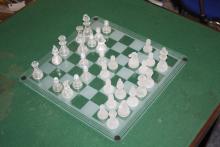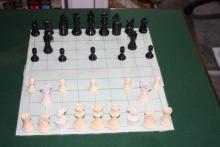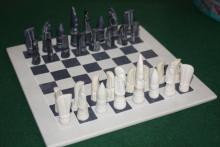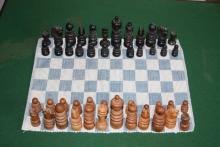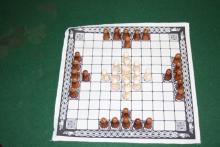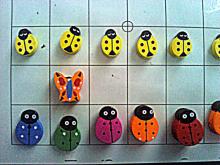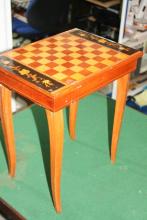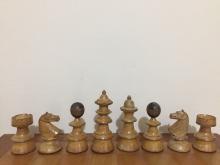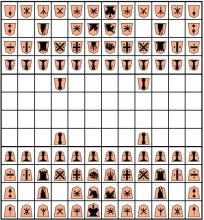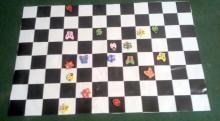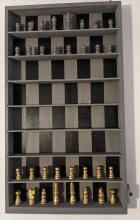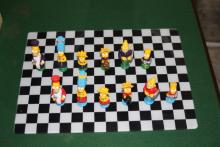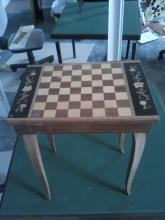-- from The Princess Bride (via Christine Malcom); WAV file listed at MovieSounds."Never go in against a Sicilian when *death* is on the line!"
I'll discuss here first some of the ideas behind the Open Sicilian. Chess magazines are full of quick White kills against the Sicilian. Why do players bother with it, then? Because the longer games where the attack founders and Black wins the endgame are too long for magazines.
Having looked at the Open Sicilian from both sides' points of view, I'll then show you some examples of how White can play for a win without having to read Nunn's "Beating the Sicilian 3" every night for the next two years. I do like the Sicilian Defence, for both sides, but got discouraged as Black by all the theory, particularly after I suffered at the hands of several White players with a "pet" anti-Sicilian weapon like those below!
An Introduction to the Open Sicilian
1. e4 c5 2. Nf3 d6 3. d4 cxd4 4. Nxd4 Nf6Black has alternatives on move 2, but will usually play ...Nf6 on move 4 to prompt:
5. Nc3
|
- White has more space and better development (Black has to move the e- or g-pawn to get the Bf8 out, and may have to spend another move on ...a6)
- Black has an extra central Pawn; White has no compensating structural advantage like a Queen's-side majority - in fact, the c-Pawn is backward on an open file. Larsen has claimed that this means the Sicilian is strategically superior for Black, and he may be right.
- Therefore, the short-term chances favour White, but as the game goes on the ending may favour Black. Sicilian games are usually a race for White to make something out of the temporary advantages in space and mobility before Black completes development and piles up on the e-pawn or the c-file. There are some common tactical themes based around sacrifices at h7, d5 and b5; Stean talks about White arranging a "tactical accident" for Black, whereas Larsen refers to White's appproach in the Open Sicilian as a "cheap trick" (!).
- The e-Pawn is a site of contention; Black may try to attack it with ...Bb7, ...Nb8-d7-c5; White may try to advance or reinforce it. The move ...b5 by Black may threaten to dislodge the Knight defender on c3, and expose the c-Pawn.
- The positions are very flexible and many plans and sub-plans are available for each side. The sharpest variations involve hazardous negotiations for each side, but slower positional approaches are adopted too.
After 5. Nc3 Black can play:
5...e6 the Scheveningen Variation,
5...g6, the Dragon Variation
5...a6, the Najdorf Variation
Another common move is 5...Nc6, which is usually named for White's reply:
6. Bg5, the Richter-Rauser attack
6. Bc4, the Fischer-Sozin attack
The Sicilian is a vast battleground where many areas have ben mapped in detail and I cannot attempt any sort of summary of the theory in these various lines.
However, there are two general structural differences which can be used to unlock some of the ideas: firstly, where is Black going to put the Bf8? If Black plays ...e6, this is solid, whereas ...g6 and ...Bg7 is much more active, but more risky. These are the Paulsen/Scheveningen and Dragon structures, respectively. Secondly, if White can play c2-c4, this denies Black three of the key opportunities for active play: ...d6-d5, ...b7-b5, and generally chances down the c-file with a minority attack against the pawn on c2. This is the Maroczy Bind, which while not a losing option for Black, is a lot less fun than lines without c2-c4.
There are other structures, like when Black plays ...e7-e5, but that's too chewy for this booklet. There is a bit of material in the sections on Knights and Planning.
- White's attacking chances against the Paulsen/Scheveningen: Ljubojevic,L - Andersson,U (Wijk Aan Zee), 1976
- Black's chances in the Paulsen/Scheveningen: Renet - Taimanov, Montpellier 1986
- White's chances against the Dragon: Karpov - Korchnoi, Moscow 1974
- Black's chances in the Dragon: Prokopp - Deuel (corr. 1986)
- Black's minority attack in the endgame
- White's chances if allowed to play c4: The Maroczy Bind
An introduction to beating the Sicilian
The repertoires below offer you three ways of playing against most of the semi-open defences, and also tell you what to do against some of the less common lines after 1. e4 e5 2. Nf3.The three approaches are:
- Fast attacking game with pieces
- Slower attacking game with f4
- King's Indian Attack with g3
Fast attacking game with pieces
- Giuoco Piano (my main recomendation for junior players) or
- Scotch Game
- A. Piece attacks against the common half-open defences
- Vienna Gambit or
- King's Gambit)
- B5. Playing f4 vs. Sicilian (a) 1. e4 c5 Grand Prix attack
- B5. Playing f4 vs. Sicilian (b)Traditional Closed Sicilian
- KIA with 1. e4 e5 2. Nf3 Nc6 3. g3 or
- in the Vienna 1. e4 e5 2. Nc3 Nc6 3. g3
- Introduction to the King's Indian Attack
- C5. KIA vs. Sicilian























